





Dog Size Chart
|
| Size | Chest Measure chest circumference | Back Measure from collar to start of tail | Neck Measure neck circumference | Leg Length See note above |
| XXS | 16" | 9" | 10" | 9" |
| XS | 16" | 10" | 10" | 9" |
| S | 19" | 13-14" | 12" | 11" |
| S-M | 25" | 16" | 14" | 13" |
| M | 25" | 18" | 14" | 13" |
| M-L | 29" | 20" | 15" | 17" |
| L | 29" | 23" | 15" | 17" |
| XL | 35" | 26" | 19" | 21" |

When measuring for full body suits, it is best to measure the dog from the centre of the back, between the front shoulders down one front leg to the floor, and measure from the centre of the back, between the back hips, down one back leg to the floor, when the dog is standing. This will ensure the best fit since the body suit sizes vary based on the type of dog. XXS XS 16" 16" 9" 10" 10" 10" XXL XXXL 36-40" 41-45" 23-25" 26-28" 23-25" 26-28"
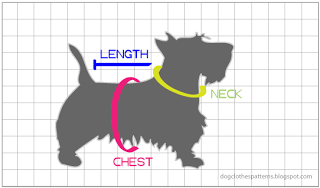
Length: Make sure your dog is standing properly, not sitting, or laying down. Measure from along the dog's backbone from the base of the neck to the base of tail.
Neck: Measure the circumference of pet's neck for a snug fit. No need to add inches as you would with a collar.
Chest: Measure the thickest part of chest. (Usually behind the two legs).

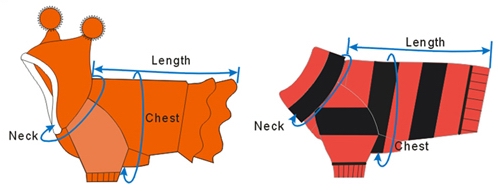
Sweaters
All measurements are in inchesSize Chest
Measure chest
circumferenceBack
Measure from collar
to start of tailNeck
Measure neck
circumferenceS 18-20" 11-13" 11-13" M 21-25" 14-16" 14-16" L 26-30" 17-19" 17-19" XL 31-35" 20-22" 20-22"


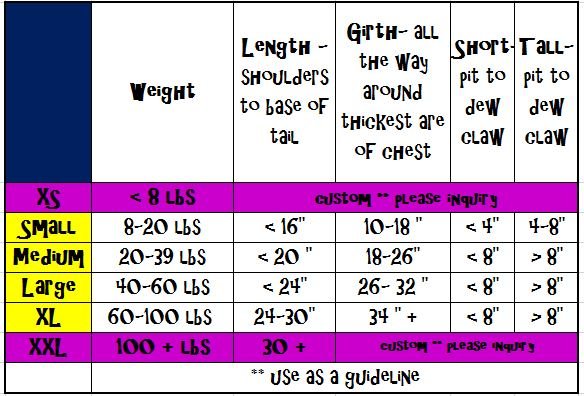
Note: - if your dogs weight is on the top end of a size - lets say a 60 lb, go to the next size! To avoid disappointment and exchange for larger size at applicable charges.
Note #2: - XS pajamas are designed for dogs less than 8 lbs because of the size most fabric designs/prints are not suitable most can be found in the premades.
Petite: - If you are ordering for someone who wears a "Petite" (5' 3" or under), avoid full length styles, such as full pajamas, as they tend to run long in the pant or sleeve. Please consider a capri, 3/4 style, or short set for the best "Petite" fit.

One of the most important attributes of a dog house is that it be the appropriate size for your dog. If the house is too small, it will be uncomfortable and your dog won't want to stay in it. If the house is too large, it will be harder for your dog to retain body heat in order to stay comfy and warm. Also, dogs feel more secure in a snug-fitting abode.
How do you determine the proper size for a dog house?
The "standard" answer is that a dog house should be large enough to allow the dog to stand up, turn around and lie down comfortably inside the house.




Size | Length | Fits Neck | Fits Chest | Recommended Sizing by Breeds |
| XXS | & | 8-10 | 10-14 | Teacup and dogs under 5 lbs |
| XS | 10 | 9-12 | 14-16 | Australian Terrier, Chihuahua, Pomeranian, Toy Poodle, Yorkshire Terrier |
| S | 12 | 10-14 | 16-18 | Boston Terrier, Jack Russell Terrier, Maltese, Pug, Silky Terrier |
| M | 16 | 12-16 | 18-22 | Bichon Frise, Beagle, Cocker Spaniel, Corgi, Scottish Terrier |
| L | 20 | 16-20 | 22-28 | Brittany Spaniel, Bulldog, Collie, Schnauzer, Springer Spaniel |
| XL | 24 | 20-24 | 28-34 | Doberman Pinscher, German Shepherd, Golden Retriever,Labrador Retriever, Rottweiler |





General Apparel Sizing Charts



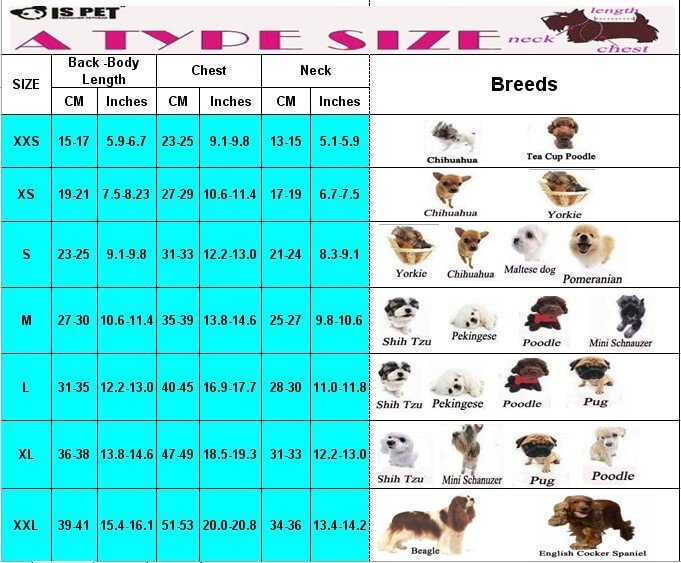




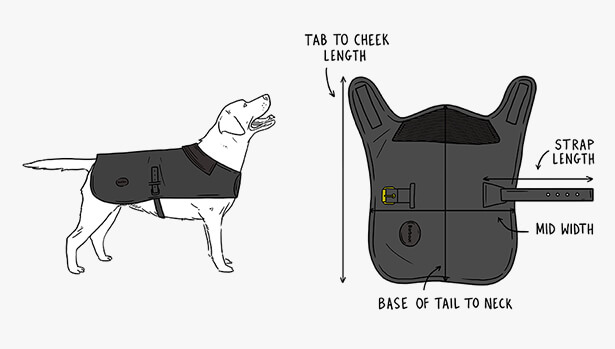
DOG CRATE & CARRIER SIZING CHART
DOG COLLAR SIZING CHART
DOG HARNESS SIZING CHART
DOG CLOTHES SIZING CHART



To measure easily the exact size of your dog's paw, please DOWNLOAD & PRINT this chart sheet in it's actual size and place your dog's paw over the images on the list
Or this chart sheet

Or use one of the following informatic charts:












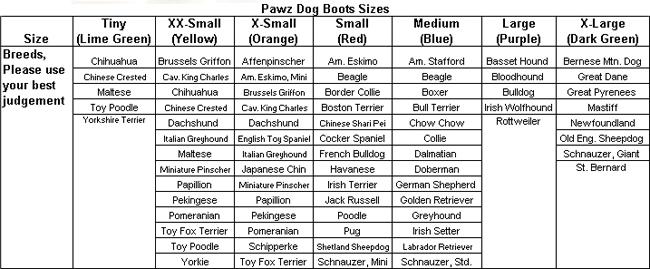
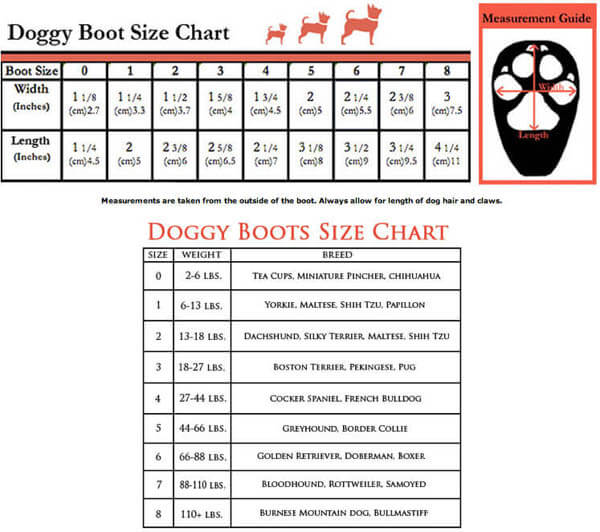



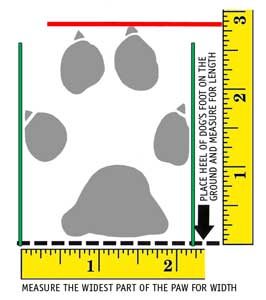


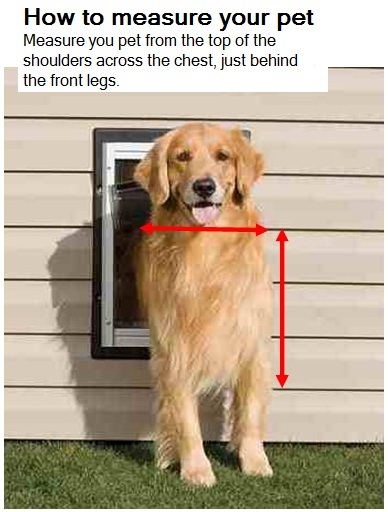





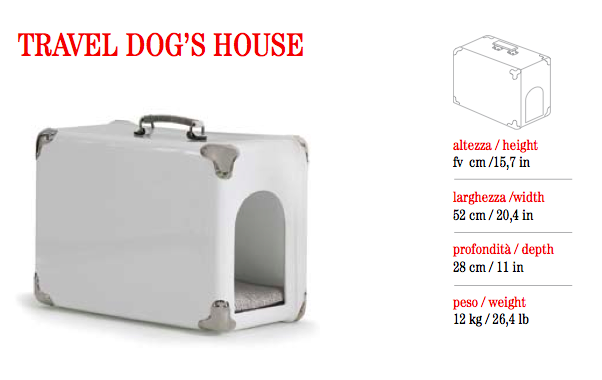
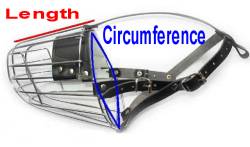








Length:Distance from the tip of the nose to eye line in inches
Circumference: Around snout one inch below eye line in inches
Eye Line: Snout width in the widest part
Neck Circumference:Circumference around neck behind ears in inches
Width: Snout width in the widest part
Height: Snout height , should be measured with mouth a little open











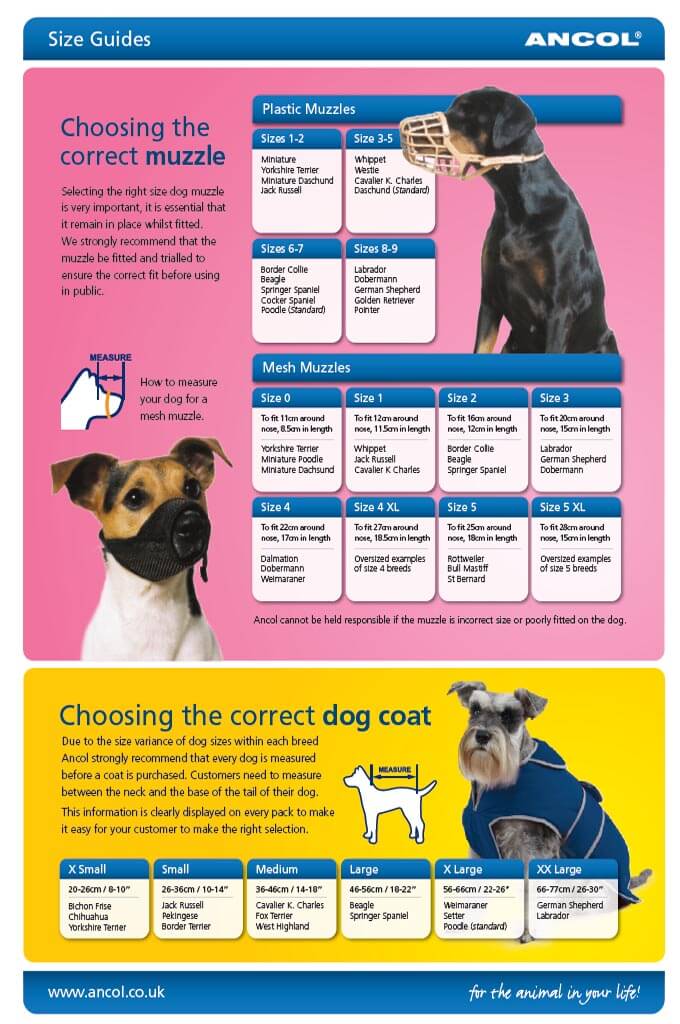




Dog carriers come in different sizes to fit your dog's size and structure as well. The dimensions of the carrier carriers might vary from one brand to another but it is basically labeled as petite, extra small, small, medium, large and extra-large.
WATCH DOG VIDEO !!!
The maximum weight at which the carrier dog carrier can carry would also vary with the size. There are many factors that you need to consider in choosing the right carrier dog carrier for your pooch but the most important ones are safety and functionality.
The market is filled with various models and you should look thoroughly until you find the one that is right for both Fido and yourself. As you already saw, this item is going to be an important part of your life when you want to enjoy your pooch's companionship so try to make it as comfortable as possible for both of you.
Given the fact that it is an acquisition that you make only once, the price should not be such a deal breaker and it should matter more the quality and usability. Regardless of your decision, we know you love your pooch and you will make the right acquisition! Choose the carrier dog carrier that fits your dog's size!

It's important to make sure the pack fits well, or else the dog could be uncomfortable or even suffer a chronic injury from walking long distances with a poorly-fitted pack. If this is the dog's first time wearing a backpack, ease into it. Have your dog wear just the pack for a few walks or hikes. Then add something light and go for another few walks.
Don't put too much weight in the pack, though, as this can hurt your dog's joints. Before heading to the store to look at dog backpacks, it's important to measure the circumference of your dog's chest. Most packs will have a specific chest size on the label, in order to provide a general fit for dogs of different breeds and sizes.
The Best Way
to Measure Dog Backpack:
LENGTH: Measure your dog from the back of it's neck towards the base of it's tail.
GIRTH: Start behind your dog's front legs and wrap the tape around the widest section of their chest.
WEIGHT: Weight your canine.
With all 3 of these measurements, you will be able to find the best doggie backpack.
Straps and Saddles:
One or Two Strap Harness: The two strap harness is intended in order that the backpack could be taken off your dog even though the harness remains on. This maybe an excellent advantage on lengthy hikes, when taking a break on the trail. You are able to get the pack off your dog, when you take yours off as well. An individual strap harness is an individual piece style. The only way to take off the pack is to take off the harness.
Compression Strap: These are straps on the bag, intended to stabilize the load, when the bages are not fully loaded. These are affixed to the pack, either horizintally or vertically. A properly fitted pack is going to sit closer to the dog's shoulders and body, keeping the weight off dog's back. The saddle bags should not beused for long, as they flap under the dog, nor should they go too far down on the dog's side. These may bounce and cause dog's discomfort. Check the pack to ensure that it allows the full range of dog's legs movements and nothing is rubbing your doggy.
FIT DOG BACKPACK STEPS:
1. Measure your dog's chest. Use a tape measure to wrap around the widest part of your dog's chest, just behind the front legs.
2. Shop around for packs. When you see one you like, check the size. Most will say what chest circumference goes with what size.
3. Have your dog try on the pack. You can do this at a pet store, or by buying the pack and bringing it home after making sure you can return it if it doesn't fit.
4. Tighten the straps so you can fit just one finger between the strap and the skin. This might seem too tight to you, but remember that the last thing you want when hiking is for loose straps to constantly rub up against your dog's skin.
5. Walk around with the dog and have your dog sit and lie down. Does the dog seem comfortable enough? Some dogs that aren't used to wearing a pack will seem uncomfortable no matter how the pack fits, though. Notice whether the straps rub up against the dog's armpits, or in the case of male dogs, the genitals.
BUYING ONLINE
DOG BACKPACK
If you are ordering online, check the return policy before you buy. Most of the packs sold for dogs are fully adjustable, but dogs come in so many different shapes and sizes. Even within a breed, it can be difficult to know if a pack will fit well without trying it on first. Be a wise consumer, and remember your dog will be wearing the pack, not you.
Some packs are designed to appeal more to people and may be less functional on the trail. Think of how you will be using the pack, and where. Does it need to be water resistant? How much gear will your dog be carrying? Is the leash attachment secure? These are all important questions before purchasing.
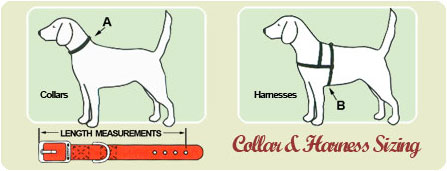














There is only the best answer for you and your particular size and breed of dog. Our goal here is to help you find clear information so you need to make an informed choice about the best dog crates for puppies and dogs. If you have a giant dog breed, there are a lot of different characteristics in the right cage versus a small dog breed, certainly.
There are a few things you need to consider before buying a crate and the most important point being the size you buy to ensure it's fit for purpose. It must be big enough to allow your dog ample room to move around without offering too much space. Your dog needs to sit up straight without banging their head on the ceiling, be able to turn around with ease and lay down on their side with their paws stretched out without being cramped. Your dog needs to sit up straight without banging their head on the ceiling, be able to turn around with ease and lay down on their side with their paws stretched out without being cramped. But to use a crate for house training, to take advantage of the natural instinct to not soil their sleeping area, it must not be big enough for your dog to use one end as a bathroom and the other as a bedroom.
Also, If the crate's too large it won't provide the feeling of safety and security that your older dog would enjoy in a properly sized crate. They will feel more like they are rattling around in a big empty room. Again, this kind of misses the point of a crate.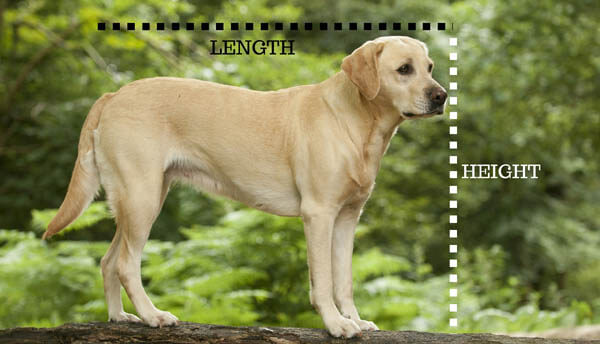
Save Money, Buy An Adult Dog Crate And Re-Size It For Your Puppy!
Your puppy will need a much smaller crate than a full-grown adult dog, though they will eventually become a full-grown adult dog. It's unreasonable to think you can keep upgrading your crates for larger ones as your puppy grows. This could get expensive very quickly. So when you buy one, it's best you do to fit the size of an adult dog and buy a divider to reduce the size of a larger crate to suit a puppy. Dividers are temporary and removable wire or wooden panels you insert into the crate to adjust the size available. Or a wooden board or sealed cardboard box will suffice to reduce the space.
This way, you only need to buy a single crate you can increase the available size of as your puppy grows and not buy many sizes to suit your growing dogs proportions.
To calculate the dimensions of your required crate simply add 4 inches onto the length and 2 inches onto the height.
Crate Length = Dog Length (inches) + 4 (inches)
Crate Height = Dog Length (inches) + 2 (inches)
Dog & Puppy Crate Sizes
Picking the right dog crate size is very important. An appropriately sized crate should have room for your dog to stand up and turn around comfortably. He should be able to stretch out and relax, and lay down on his side if this is his preferred sleeping position. However, it should not be much larger than the amount of space required to do these things.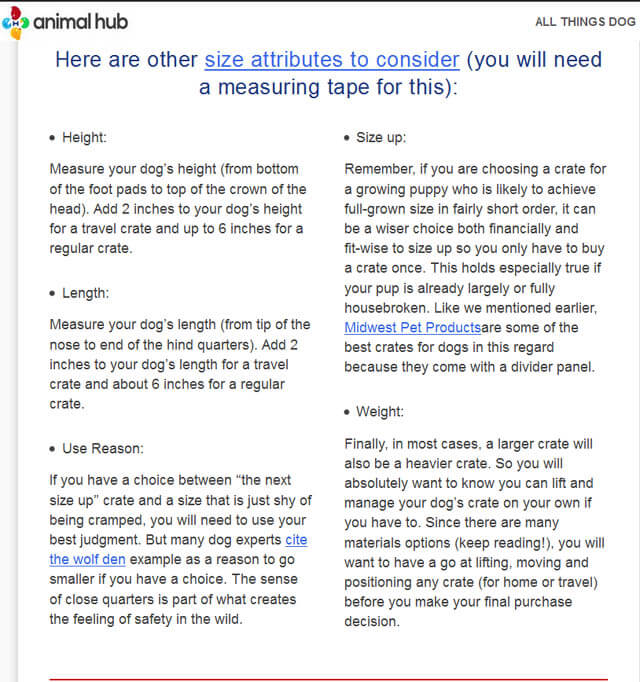
The reason for this is if you choose a crate which is too big you increase the risk of your dog using a part of it as a toilet, as they will not see the entire dog cage as their nest. If you are unsure by eye which is the right sized crate, then you can always measure your dog. To get the right length simply measure your Labrador when he or she is standing up. Take a note of their length and height as shown in this diagram.
THESE DOG CRATE MEASURE CHARTS
PROUDLY PRESENTED by WWW.LABRADOR
TRAININGHQ.COM !!!


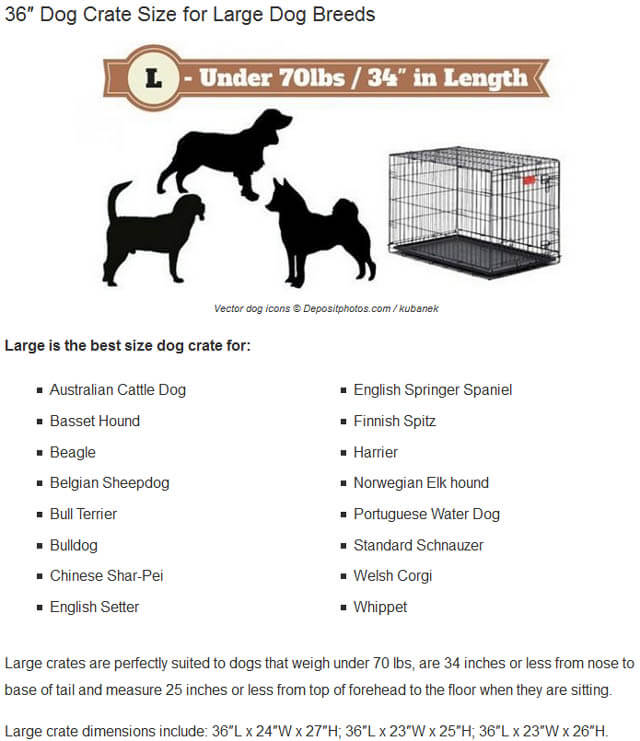


Remember, for a growing puppy you can create the correct crate size from a larger crate using a divider. Expanding it as they develop.

The range of size, shape, color, personality and purpose for which dogs are bred is jaw-dropping. Over centuries, different dogs in different geographic locations have been honed by humans to play certain roles, from hunter to guardian, from herder to companion. For some of these breeds, size has been a significant player in the search for perfection, whether that was to hunt bigger or faster game or guard a home with more intimidation, or even just to have the mass to survive in freezing locations. Of the hundreds of dog breeds around the world, here are nine of the largest.
GREAT DAME
We'll start with the breed that is widely recognized as the largest, at least in terms of height. The Great Dane is a breed of German origin and its German name of Deutsche Dogge, means German Mastiff. However, before setting down official roots in Germany, the dogs that eventually became the Great Dane breed came from a crossbreed between English mastiffs and Irish wolfhounds. Though they aren't the heaviest dogs, reaching around 100-120 pounds, they are among the tallest. The average Great Dane stands around 28-30 inches tall but are often taller. The world record holder for tallest dog was a Great Dane named Zeus who stood an astounding 44 inches tall. However, these big dogs trade longevity for their size, and live only to be between 6 to 8 years old. Zeus died of old age at just 5 years old. Though the Great Dane is typically considered the largest of all dog breeds, we're going to look at a few other breeds that give this one a run for its money, including one breed that is actually even taller.
NEAPOLITAN MASTIFF
Mastiff breeds are certainly among the largest dogs in terms of sheer mass. The Neapolitan mastiff originated in southern Italy. Used as a guard dog, the average male mastiff stands between 26-31 inches tall and weighs a hefty 130-155 pounds. Females are usually a little smaller, standing a few inches shorter and weighing 110-130 pounds. This breeds is known for being fearless and protective of home and family, making them an ideal guard dog, but not an ideal warning system. They tend to be quiet, and are known for sneaking up on intruders rather than barking to warn them off. Because of their protective nature, you certainly don't want to stand between these dogs and their family, which makes this dog a breed only for owners well versed in dog training and able to put in the extensive time needed for socialization. 
SCOTTISH DEERHOUND
Going back to the leggy breeds, the Scottish deerhound gives away its purpose and origin in its name. Originating in Scotland well before recorded history, the breed is a courser, once used to hunt red deer and easily chasing down its prey. 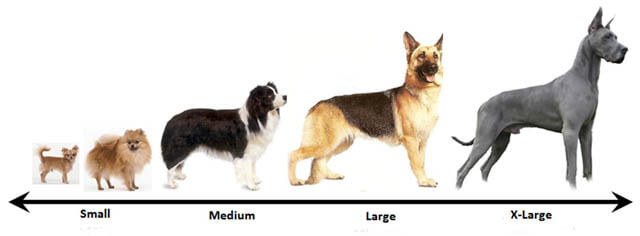
They are larger and heavier than greyhounds but are built similarly, with a lanky body meant for speed. Deerhounds can stand as tall as 32 inches and weigh as much as 110 pounds. Though they aren't used for deer hunting today, the breed is kept alive by enthusiasts who use them for show and in some places, lure coursing. 
DOGUE DE BORDO
The Dogue de Bordeaux goes by several other names, including the Bordeaux mastiff, French mastiff or Bordeauxdog. But this breed, by any other name, still stands as massive. Though other breeds, from the poodle and French bulldog to the Great Pyranese and Basset hound may be more famous breeds of French origin, the Dogue de Bordeaux is one of the most ancient breeds of France. The Dogue de Bordeaux stands between 23-27 inches tall and weighs between 125-150 pounds. But though it is fairly average as far as mastiff breeds go, it does have one thing that sets it apart: it is reported to have the largest head of any canine in relation to body size. Unlike the Neapolitan mastiff, the Bordeauxdog has been used for more than simply guarding house and home, though that was also in its job description. These dogs also were used for everything from watching over flocks to pulling carts. It has historically been a true working dog and a jack of all trades, at least, as far as dogs go. The breed is active and energetic outdoors, but once inside is, well, mellow to say the least. 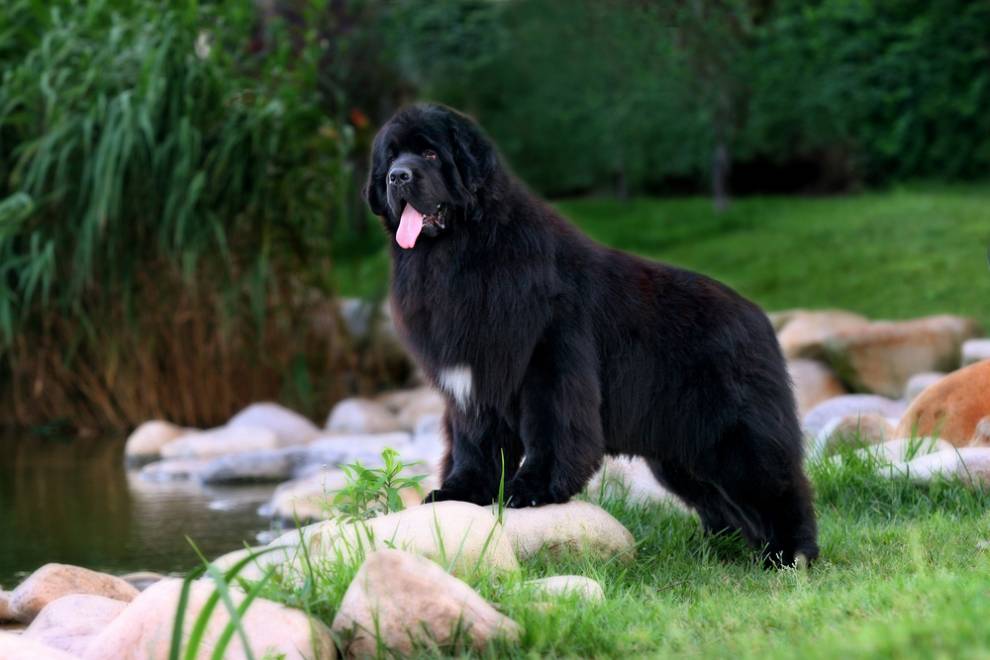
NEWFOUNDLEND
The Newfoundland is a working dog from, you guessed it, Newfoundland. Unlike many larger breeds, the Newfie wasn't bred to be a guard dog. Instead, its purpose was originally to help fishermen. The big, muscular dogs are able to haul nets and lines from boats, pull carts and, most importantly, fetch anything that falls overboard, including people. The breed is an exceptional water dog and strong swimmer, and there have been many rescues of people out at sea credited to these big, gentle-natured dogs. Newfoundland dogs stand between 27-30 inches tall and weigh as much as 150 pounds. They look even bigger because of their thick double coat, which keeps them warm even in icy water. 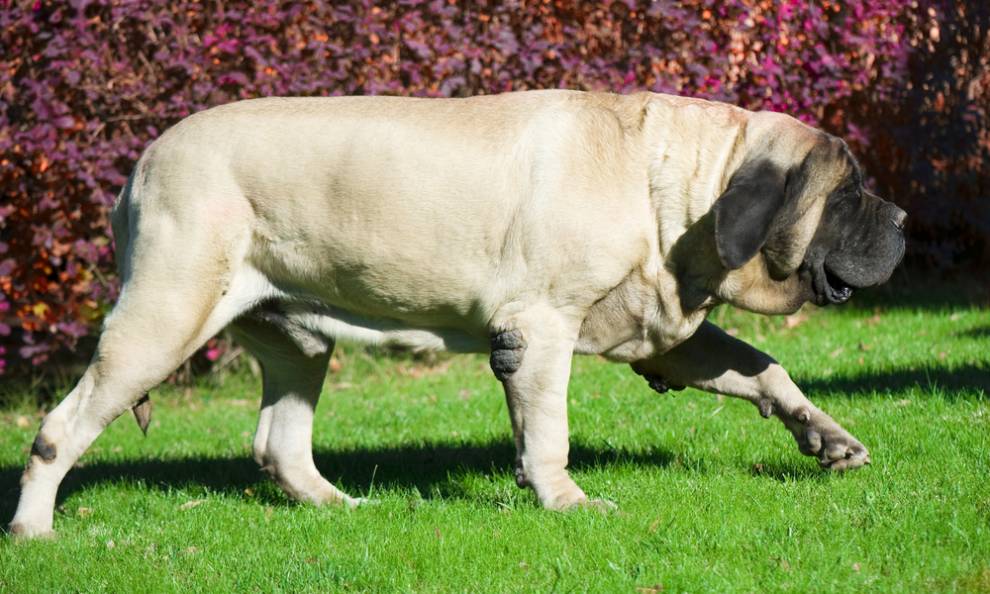
ENGLISH MASTIFF
The English mastiff is enormous. Growing to a height of 30 inches, these dogs can weigh as much as 250 pounds. As a Great Dane holds the record for tallest dog, an English mastiff holds the record for heaviest. The biggest weight for a dog ever recorded was an English mastiff named Aicama Zorba, who weighed in at 343 pounds. Their size is a significant part of the breed's past purpose, which included blood sports such as baiting bears, bulls and lions. Today, however, they are simply gentle giants, letting those courageous and fearless aspects of the breed's temperament sit on the back burner while the mellow, even-tempered and loyal sides come forward. They can make excellent family dogs as they are so easy-going. So if your kids are asking for either a dog or a pony, well... it's not like size should factor into your decision: 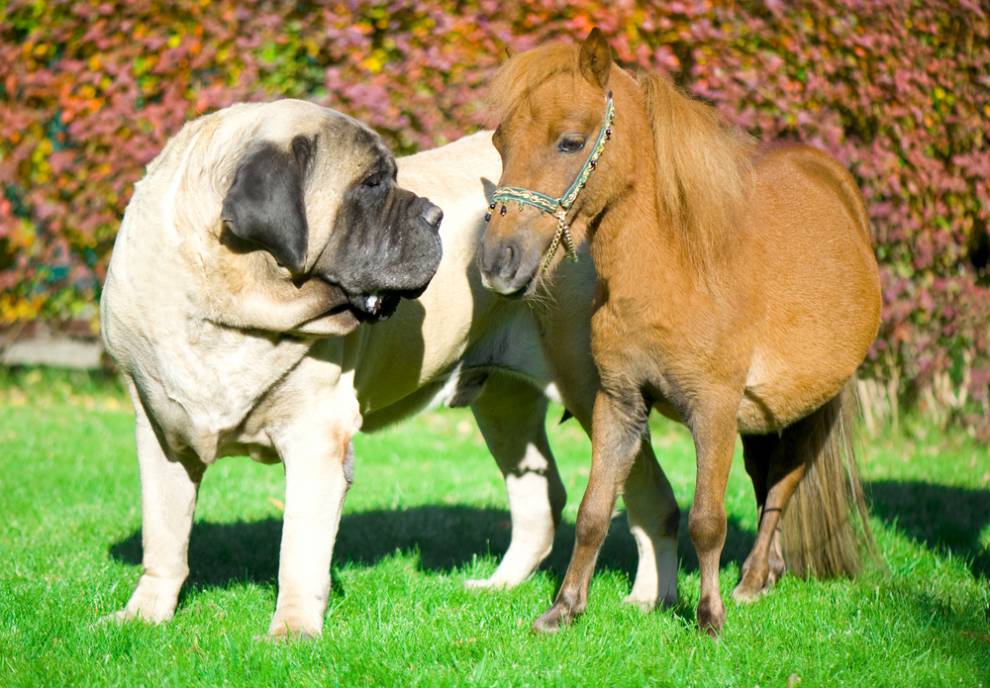
SAINT BERNARD
The Saint Bernard of brandy-toting fame is a breed originally created in the Swiss Alps and northern Italy as a rescue dog. The monks of the Saint Bernard Hospice are credited with training dogs for rescue and for playing a role in developing the breed we know today. Dogs can stand between 25-30 inches tall and weigh anywhere from 140 to 180 pounds. Though they were originally used as rescue dogs to find and save travelers, today's Saint Bernards are mostly family dogs. They are famous for being gentle, loving, friendly and great with children. They are also apparently great with kittens, too
LEONBERGER
If the Leonberger reminds you of a Newfoundland mixed with a Saint Bernard, it should. That's exactly how the breed originated. In the mid-1840s, Heinrich Essig of Leonberg, Germany crossed a Newfoundland with a Saint Bernard for four generations, then added in a Pyrenean Mountain Dog to the mix. The result of these several generations of breeding is the Leonberger. This breed stands between 27-31 inches tall and can weigh as much as 170 pounds on the heaviest end of the range. But despite their size, they are simply giant family dogs. Though their main purpose is as a companion animal, the breed does very well in everything from water rescue to tracking to herding. If it is an activity that requires both strength and smarts, the Leonberger is probably going to be good at it. 
IRISH WOLFHOUND
Like the Scottish deerhound, the Irish wolfhound was bred to be a courser, and was indeed originally used to chase down wolves. Developed from war hounds into a dog used for hunting and guarding, the Irish wolfhound is ancient and may have been brought to Ireland as far back as 7000 BC. Though their primary use was hunting, today's dogs are fairly quiet and reserved, intelligent and easy-going. This breed is the tallest of all dogs, even the Great Dane. According to breed standards, the minimum height should be 32 inches for males and 30 inches for females. That's just the minimum. Males often stand as tall as 34-35 inches and weigh upwards of 140 pounds. And though the English mastiff is as tall as a miniature horse, the Irish wolfhound is equal to a donkey.




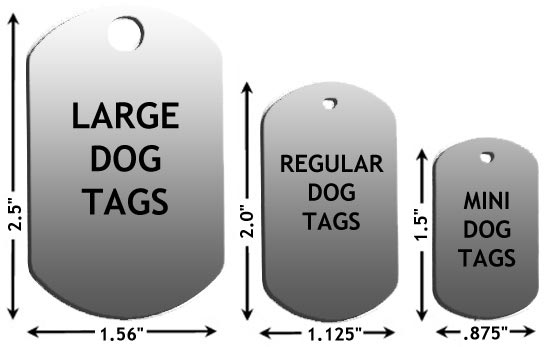

How to Choose the Right Dog Bed Size
Choosing the right size dog bed probably seems like a simple matter and ultimately it is. But that doesn't stop dog owners from regularly making the wrong purchase decisions. Many dog owners simply estimate the size they need. Taking a wild guess will more often than not result in the wrong choice though. Most pet owners tend to underestimate the amount of space their dog needs to sleep comfortably, so they end up purchasing dog beds which are too small. If you buy a dog bed which is too small, you will have to return it and get another, which wastes time and money. So it pays off to do it right the first time.
How do you choose the right dog bed size? You will have to know the following things:
The breed of your dog and your dog's shoulder height. One or the other alone will not help you find the right dog bed size on a sizing chart. While your dog's shoulder height is one measurement that you need, remember that two dogs with different breeds and the same shoulder height can have other measurements which differ. They will not necessarily fit comfortably in the same bed.

Your dog's weight. Even if a bed has the right dimensions, it may still be the wrong bed if it cannot support your dog's weight. 
Your dog's sleeping habits. There is no one-size-fits-all rule when it comes to this. While certain breeds may tend to sleep a certain way, you cannot assume that your dog sleeps a certain way without watching him or her. Spend some time observing your dog as he sleeps. Does he like to curl up? Burrow inside piles of dirty laundry? Nestle against pillows on the couch? Stretch out and splay his limbs everywhere?
Two dogs could be the same breed with the same exact measurements and require two different beds, depending on how they sleep. A dog that stretches out will not be comfortable in a bed for a dog that wants to nestle up, and vice versa. Also keep in mind that some dogs love to sleep in different positions. These dogs may need more than one dog bed, or a dog bed that provides them with some flexibility each night. 
When you see dog beds for sale, you will generally see one of two sizing schemes:
Sizes like XS, S, M, L, XL, and XXL. Some stores size dog beds like they size clothing. Each size will fit a certain size and weight range.
Specific dimensions. Other stores will actually specifically tell you the length and width of the bed. It is generally less work to figure out what size dog bed to buy when you can actually see their exact dimensions.
Your next step is to find a dog bed sizing chart. There are a lot of dog bed sizing charts out there. They are all organized differently. With some, you might start with your dog's weight and then look up recommended sizes. With others, you might begin with your dog's breed or measurements, and then find a suggestion for dog bed dimensions. Your goal is to try and find an actual length-by-width measurement that you can use to select a dog bed. If you are shopping at a store that uses measurements like S, M and L, you need to know how they define those measurements according to actual length and width. For different types of dog beds (rectangular vs. round for example), different measurements will apply. That is why you have to figure out the dog bed shape as part of the sizing process.
Remember, most dog owners tend to underestimate and get a bed which is too small. So if in doubt, go with one which you think will be slightly too big, and chances are good you will get the perfect size. When you get your new dog bed, give it a test run and make sure your dog is actually comfortable in it before you stay with it. Be prepared to exchange it for another if you have to. Your top priority is always to make sure your pet feels cozy and safe!





Support the dog in a normal standing position using a support sling. All four paws should be flat on the ground and the top line of the dog should be straight. Have another person keep the dog's attention so that the head is facing forward.
All measurements must be taken with the pet held in a normal healthy standing position. Use a metal tape measure or yardstick and provide us with straight-line measurements. Have a friend assist you in supporting the pet.
Measurement A - Make sure that the dog's front legs are set squarely beneath the shoulders, not bracing forward or back or splayed to the sides.Using a metal tape measure, ruler or yardstick, follow the front legs up to the top of the shoulder blades (see photo) and measure A.
Measurement B - Measurement B is taken from the center of the front leg to the beginning of the rear leg. This measurement tells us how long the side rails need to be in front of the saddle.
Measurement C - Placing one hand gently against the inside of the rear leg, measure straight across the widest part of the pet's thigh, being careful not to compress the muscle, for measurement C.Check both legs and provide us with the largest measurement.
Measurement D - Placing your hand between the dog's legs, and gently pushing upward. Measure from the dogs pelvic floor (muscle) to the ground for measurement D - "floor to groin."
Measurement E - Use your caliper to measure straight across the widest part of the pet's body for measurement E. Be sure to take E measurements at the shoulders, ribs, and rump. (You should be able to comfortably pass the caliper over each widest point.) Click here for instructions to make and use the caliper to measure your dog.The second alternative to the caliper is to gently box the dog in with two stiff objects, such as clipboard or books, making sure not to box in the entire side of the dog at once. (See photo) 
Notes:
C and E determine the size and shape of the frame and saddle. They are welded dimensions and cannot be adjusted, therefore double (and triple) check these two.
All measurements must be taken with a rigid tape measure or yardstick, with the dog help in an upright standing position. A caliper is needed for measurements C & E.
Measurements C & E are fixed widths. These measurements are not adjustable.
For measurement C, please measurement both sides and give us the largest dimension.
To get an accurate measurement for measurement E, use a caliper to measure your dog at the shoulders, rib cage and rump. Make sure the fur is compressed.
Please double check your measurements. It is important to make sure the wheelchair fits your dog just right.


DOG WHEELCHAIR HOMEMADE CALIPER
DOWNLOAD PDF



